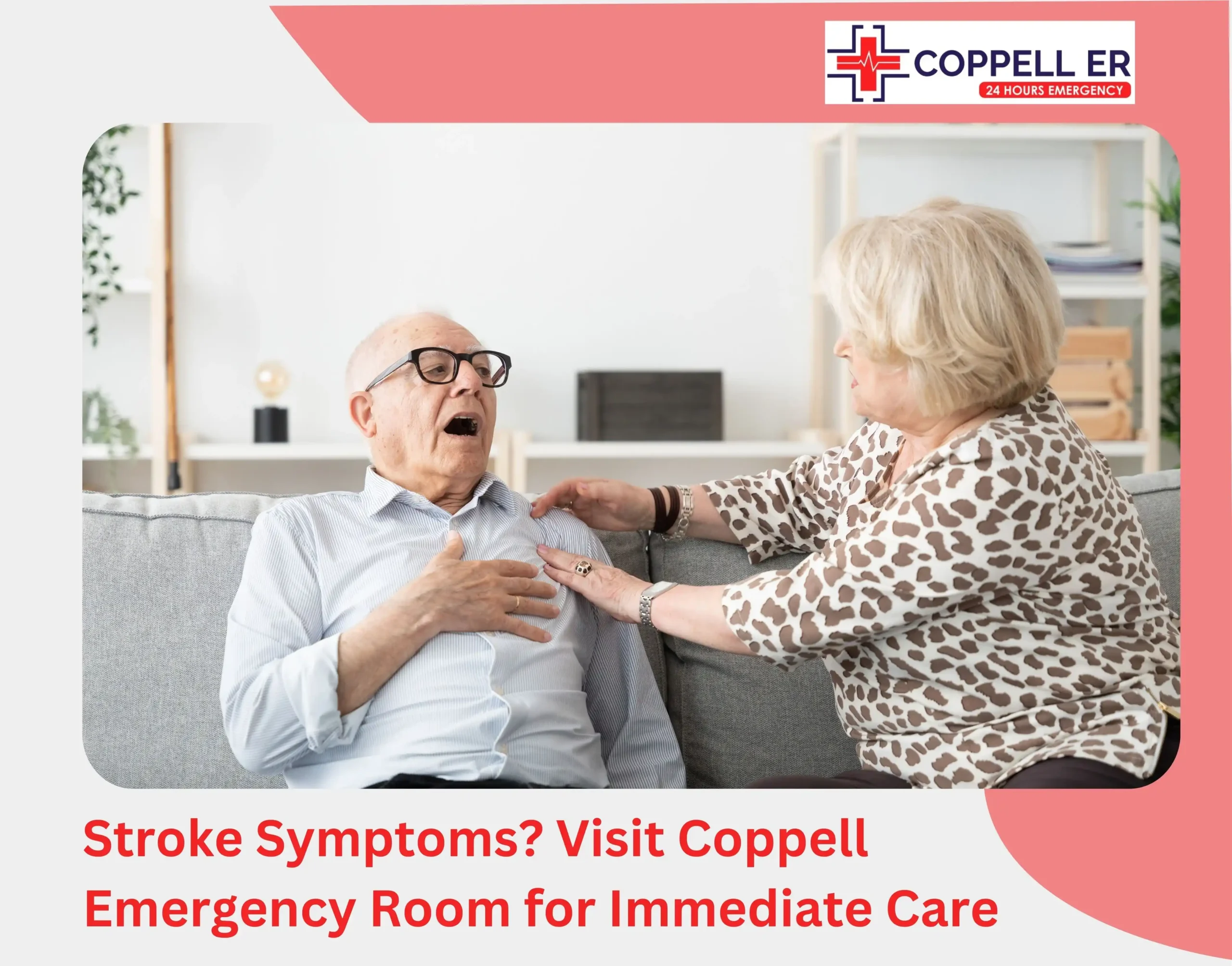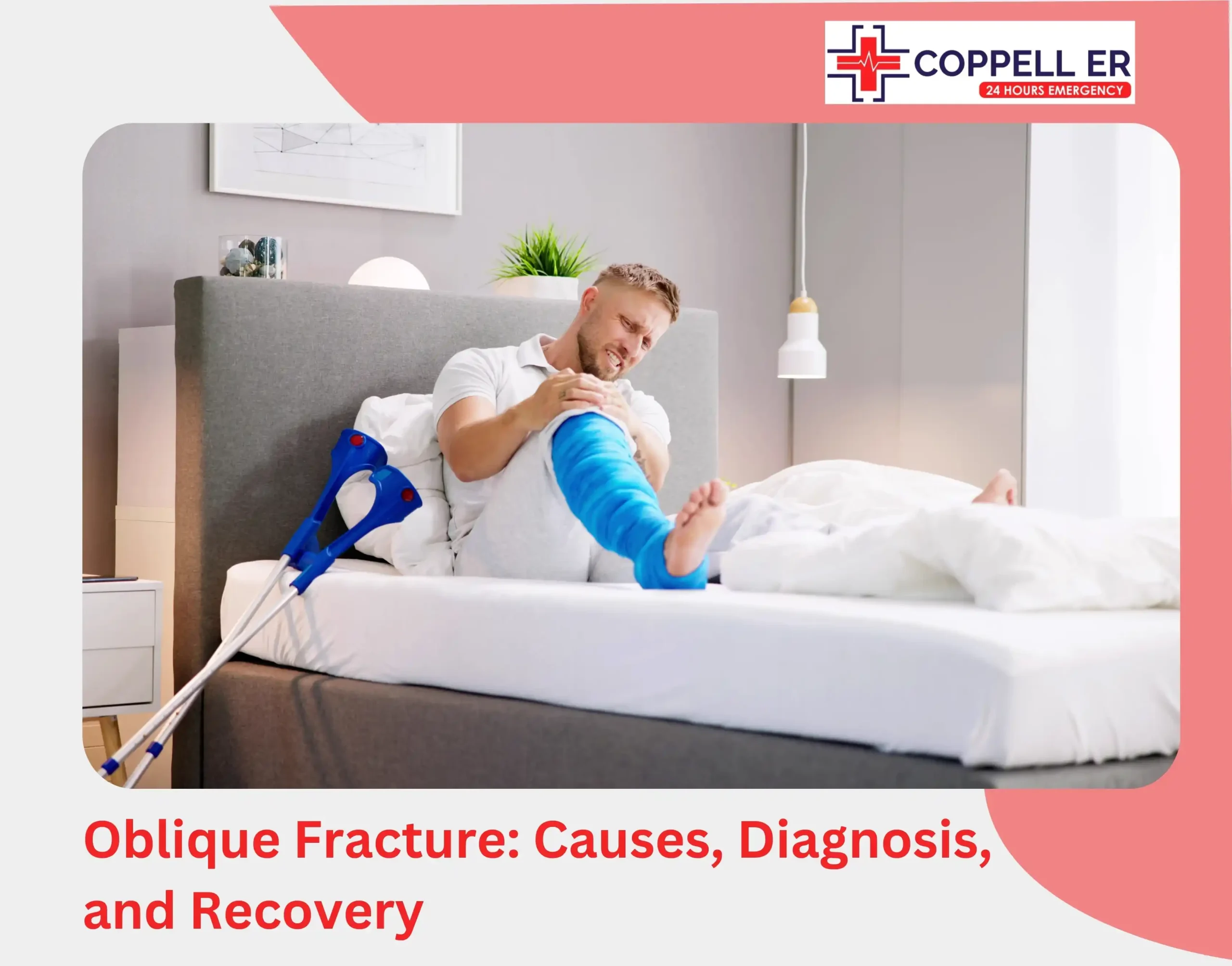Every 40 seconds, someone in the United States has a stroke¹. One moment you’re fine, then your face feels odd, your speech slurs, or your arm won’t move like it should. These moments of uncertainty can be frightening.
But the good news is that fast action changes everything in stroke care. The right stroke treatment within the first three hours can mean the difference between recovery and disability. That’s why recognizing stroke symptoms and knowing exactly what to do next is crucial for everyone, not just those at high risk.
At Coppell emergency room, we use advanced imaging and on-site laboratory services to deliver rapid stroke diagnosis 24/7. We provide immediate access to emergency stroke care and efficient transfer to specialized stroke centers when needed.
What Are the Signs and Symptoms of a Stroke?
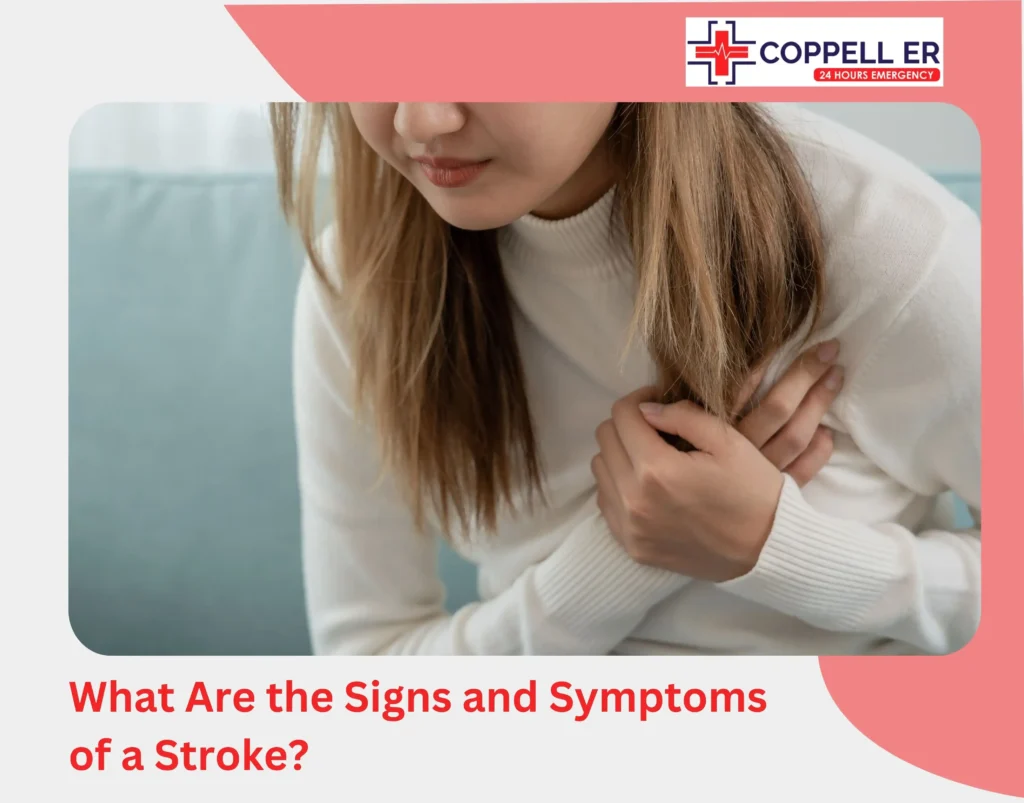
A stroke can present with a range of symptoms,but the most common ones influence movement, speech, and thinking.
The FAST technique is a simple way to recall stroke warning signs:
- F – Face Drooping: One side of the face might droop or feel numb during stroke onset. Request the person to smile. An uneven smile is a warning sign.
- A – Arm Weakness: A sudden inability to lift or manage an arm might suggest muscle weakness due to a stroke.
- S – Speech Difficulty: Slurred or unclear speech, or trouble comprehending words, is a critical stroke symptom.
- T – Time to Call 911: Immediate medical care is vital. If you experience these signs, seek emergency assistance without delay.
Other Early Signs of Stroke
In addition to the FAST signs, other indicators to watch for include:
- Abrupt confusion or trouble comprehending speech
- Difficulty seeing in one or both eyes
- Intense headache with an unknown origin
- Loss of coordination, lightheadedness, or difficulty walking
- Should any of these symptoms occur, it is crucial to obtain emergency assistance right away.
Mini Stroke Symptoms: Understanding Transient Ischemic Attacks (TIAs)
A ministroke, referred to as a transient ischemic attack (TIA), happens when there is a momentary blockage of blood flow to the brain. Unlike a full stroke, TIAs do not result in lasting damage, but they serve as indicators of a potential future stroke.
Typical Mini Stroke Symptoms
- Temporary weakness or tingling in the face, arms, or legs
- Short-lived vision changes or hazy vision
- Slurred speech or difficulty expressing words
- Brief episodes of dizziness or balance problems
As TIAs can precede a severe stroke, obtaining prompt medical attention can assist in avoiding long-term issues.
Stroke Symptoms in Women vs. Men: What to Know
While stroke symptoms often overlap between men and women, women may experience unique warning signs that can be mistaken for other conditions, leading to delays in treatment. Recognizing these differences can be life-saving.
Stroke Symptoms in Women
- Sudden and persistent hiccups
- Nausea or vomiting without a clear cause
- Chest discomfort or trouble breathing
- Confusion or disorientation
- Extreme fatigue
These symptoms don’t always align with neurological issues, leading women to overlook them or attribute them to stress, digestive problems, or hormonal fluctuations.
Nonetheless, any abrupt and unusual change in health especially when paired with typical stroke indicators requires prompt medical care.
Stroke Symptoms in Men
- Numbness or weakness on one side of the body
- Slurred or hard-to-understand speech
- Sudden imbalance or coordination loss
- One-sided facial drooping
Men are more likely to experience these classic stroke symptoms, making it easier to identify and respond. However, strokes can escalate quickly, and postponing treatment even by a few minutes can result in lasting damage.
Why Emergency Stroke Care Matters
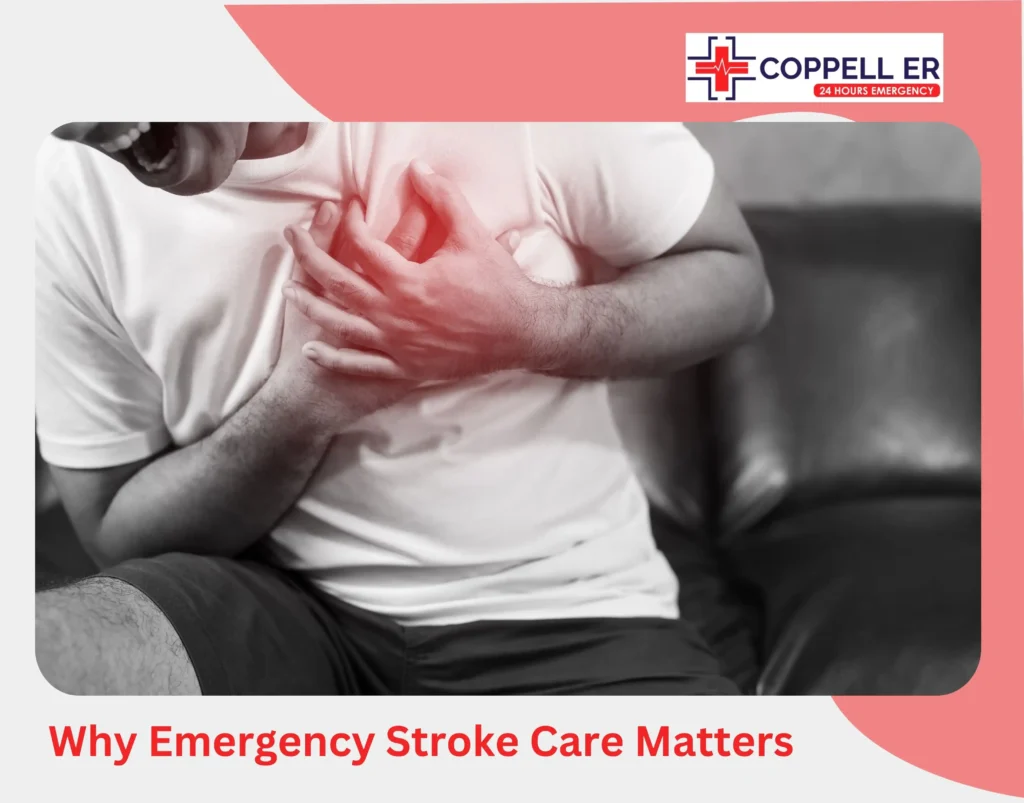
A stroke can cause irreversible brain damage if not treated quickly. Every minute without proper care means more brain cells lost. Seeking medical intervention within the critical first few hours can dramatically improve recovery and reduce the risk of severe disability.
Treatment Options
- Clot-Busting Medication (tPA): If the stroke is ischemic (caused by a blood clot), this medication can dissolve the clot and restore blood flow, but it must be administered within a narrow window for effectiveness.
- Advanced Imaging: CT scans and MRIs quickly confirm the type and location of the stroke, guiding emergency physicians toward the most effective treatment.
- Oxygen Therapy: Ensuring the brain receives enough oxygen helps minimize damage and supports recovery.
- Specialized Stroke Care: Our expert team rapidly assesses symptoms, stabilizes patients, and initiates targeted treatments to prevent complications and maximize recovery potential.
Read More: MRI vs CT Scan: Which Is Best for Brain Imaging?
Preventing Strokes: Key Lifestyle Changes
While genetics and aging play a role, many strokes are preventable. Simple lifestyle adjustments can dramatically reduce your risk and improve overall brain health.
Tips to Reduce Stroke Risk
- Maintain a diet that supports brain health by consuming a diverse range of fruits, vegetables, whole grains, and lean proteins while reducing processed foods and excess salt to keep blood vessels functioning well.
- Keep physically active with routine exercise such as walking, swimming, or resistance training to lower blood pressure, decrease cholesterol levels, and improve blood flow.
- Control chronic illnesses like hypertension, diabetes, and high cholesterol through medication, nutrition, and physical activity, as these are significant risk factors for strokes.
- Eliminate detrimental habits like smoking, which causes blood vessels to thicken and constrict, as well as excessive drinking, which elevates blood pressure.
- Be aware of your family medical history. If there is a history of strokes in your family, engaging in proactive discussions with your healthcare provider about screenings and preventive strategies can be crucial.
- Minor, consistent changes made today can help protect your brain for the future. Take steps now to preserve your health.
Seek Emergency Care for Stroke Symptoms
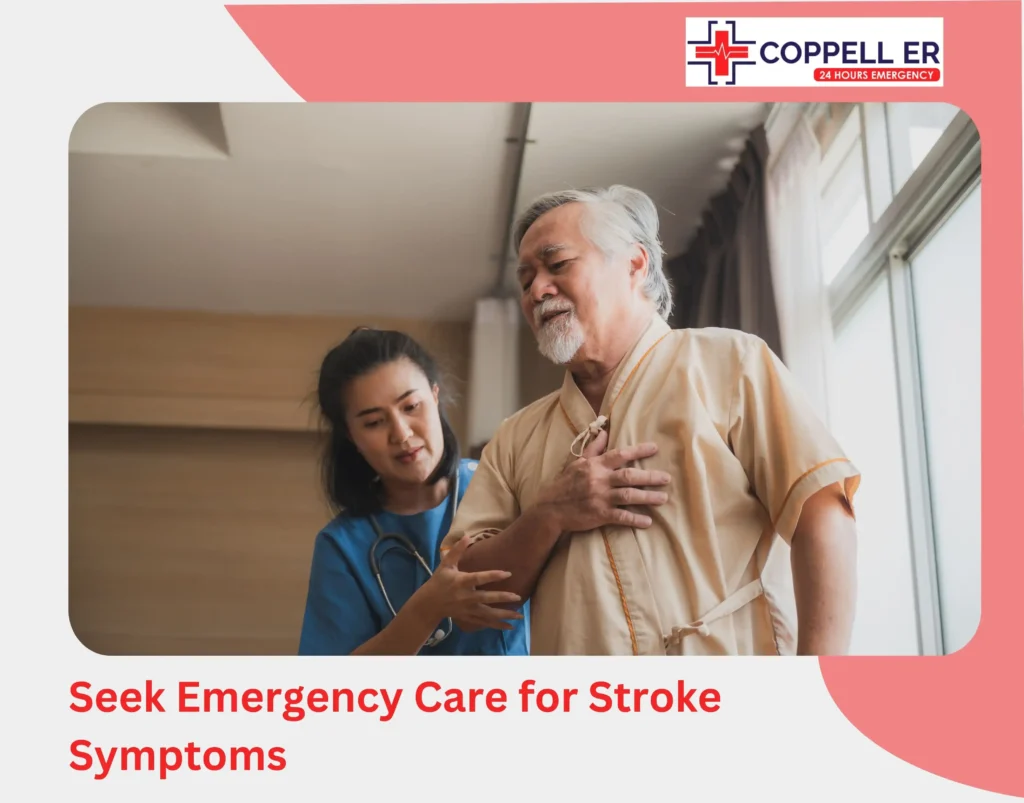
Stroke symptoms can appear suddenly and shouldn’t be ignored. If you or someone nearby experiences numbness, slurred speech, or trouble seeing, get help right away. More severe signs, like fainting or seizures, also need urgent medical attention.
At Coppell Emergency Room, we’re available for you 24/7 with advanced imaging and expert care to diagnose strokes. Time matters in a stroke. If something feels off, trust your instincts and get checked immediately.
FAQs
Which fruit is best for stroke?
Berries, especially blueberries and strawberries, are rich in antioxidants that help improve blood flow and reduce stroke risk.
How to prevent stroke while sleeping?
Maintain a healthy sleeping position, avoid excessive alcohol, and keep blood pressure in check to reduce stroke risk during sleep.
What is a bleeding stroke?
A bleeding stroke, or hemorrhagic stroke, occurs when a blood vessel in the brain ruptures, causing bleeding and pressure on the brain.

